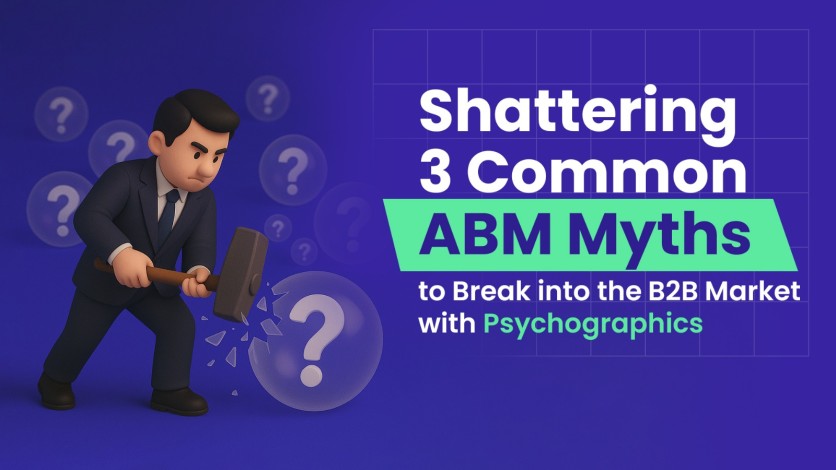
Account-based marketing (ABM) has been proven to be one of the best ways to succeed in the B2B marketplace. Yet, several misconceptions about ABM within the B2B market only limit growth. These untruths should not be allowed to prevail, and this article aims to shatter the myths surrounding it.
Myth 1: "ABM is about targeting businesses, not people."
This statement that account-based marketing focuses solely on company attributes rather than on individuals is misplaced. The truth reveals itself upon closer inspection. While businesses sign contracts, it is the people who drive the decisions.
Behind every enterprise decision is a diverse stakeholder committee. The account is not a single entity but a collection of executives operating on its behalf. Purchase decisions result from collective brainstorming, review, and discussion, and rarely depend on a single individual.
Experienced ABM practitioners recognise that actual people always need to be included in the process. They understand that targeting a business as an inanimate entity separate from its people is fundamentally flawed. Effective strategies focus on the buying committee—stakeholders are drawn from functions including finance, procurement, IT, and others who serve as users, facilitators, and leaders.
The most effective ABM approaches infiltrate corporate barriers with messaging that resonates with organisational imperatives and individual motivations.
Myth 2: "ABM is a market of one."
Whilst ABM treats each account as a market of one, this oversimplification masks the complex reality within organisations. Modern B2B purchasing involves sophisticated buying committees comprising multiple stakeholders who evaluate, assess, and make purchase decisions. These committees function as complex ecosystems with complicated power dynamics spanning across functions.
Strategic ABM practitioners implement dual-level personalisation—customised account marketing coupled with personalised messaging for each committee member. They align content to specific roles and concerns—ROI for the CFO, security for IT, and usability for end users. This approach drives deeper engagement and accelerates decision-making timelines.
Effective account-based marketing balances personalisation with scalable execution, recognising common patterns while respecting each organisation's unique context.
Myth 3: "B2B buyers are always data-driven and rational, and personal emotions have no bearing on B2B purchase decisions."
The above fallacy suggests that business decisions emerge purely from logical reasoning and data points. However, individual personalities play an important and often overlooked role in influencing outcomes.
Think ABM, an AI-powered B2B account-based marketing company, understands that while data and logic are key, personal traits still significantly impact decisions. Each stakeholder brings unique motivations, concerns, and decision-making patterns to the table. Their personalities—Adaptors, Socialisers, Innovators, Risk Takers, Traditionalists, or Leaders—profoundly shape evaluations.
Think ABM's Insights IQ approach leverages psychographic insights to create deep connections with key stakeholders. By analysing digital engagement patterns, content consumption habits, and professional interaction styles, they build comprehensive psychological profiles of decision-makers, enabling communications that address specific cognitive biases, motivational drivers, and professional aspirations.
The Think ABM Approach
Moving past these myths requires sophisticated strategies that recognise the human aspect of B2B decisions. Think ABM uses software that extracts psychological profiles of buying committee members using publicly available information across platforms like LinkedIn, X, Instagram, and Reddit.
Drawing inspiration from the OCEAN model (Openness, Conscientiousness, Extraversion, Agreeableness, Neuroticism), they take the psychographic analysis further and categorise stakeholders into eight personality types, recognising that many people exhibit blended traits. This psychographic-enhanced approach, combined with intent data gathered through online behavioural cues, enables organisations to move beyond generic value propositions to tailored communications.
The results speak about its efficiency, as clients implementing this methodology report improved engagement metrics and accelerated deal speeds compared to traditional ABM approaches. By dismantling pervasive myths, B2B marketers can architect ABM strategies that genuinely engage target accounts, addressing the full scope of factors and thus driving complex purchasing decisions.
ⓒ 2025 TECHTIMES.com All rights reserved. Do not reproduce without permission.





